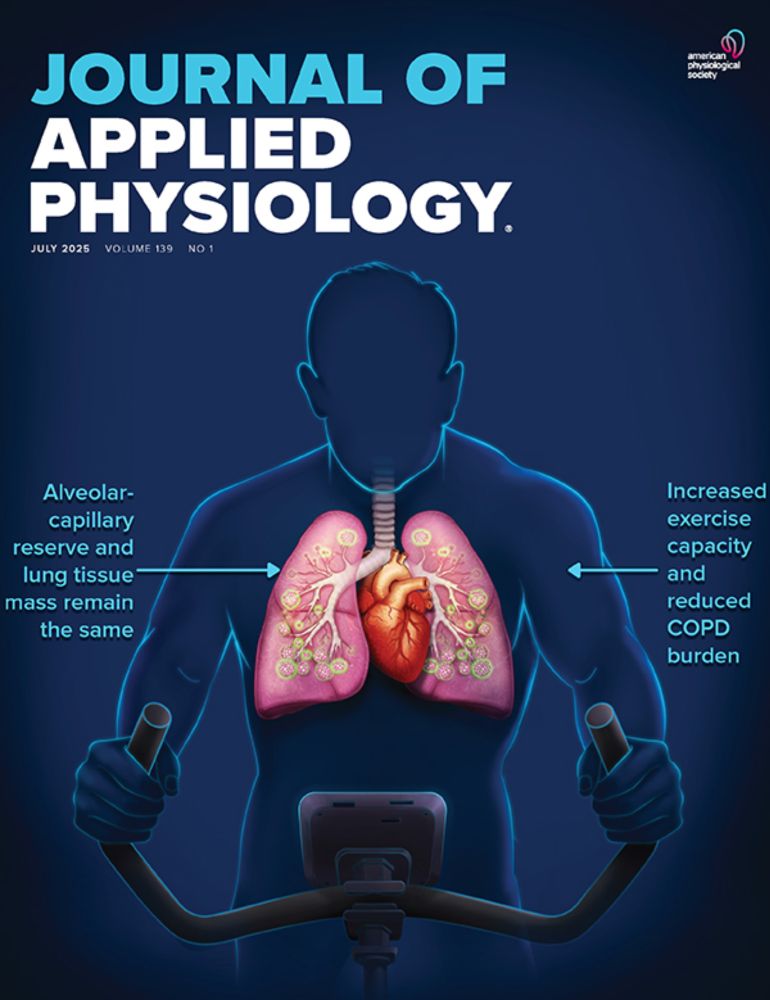Thread of French and Dutch research institutes slowly unsubscribing from web of science (and thence impact factors).
03.12.2025 06:53 — 👍 72 🔁 30 💬 2 📌 5
the preprint was published two years before. DMCA would not make sense as the paper was published in Feb 2025. But the paper was not taken down...
02.12.2025 19:49 — 👍 1 🔁 0 💬 1 📌 0
The replication crisis wasn’t an accident or an isolated failure. It was the visible symptom of a system that rewards novelty over reliability and significance over approaching truth. Replication exposes the cracks, but the causes lie deeper—in the structure of scientific 🧪 practice itself.
#SciComm
02.12.2025 19:09 — 👍 5 🔁 1 💬 0 📌 0
Can you really learn anything about the effect of aging on motor control that we don't know yet with N=8 per age group?
Sigh...
Oh wait...
"rigorous and reliable quantitative benchmarks" 🙄
02.12.2025 19:20 — 👍 0 🔁 0 💬 0 📌 0
If the field did an order of magnitude fewer studies total, and instead pooled resources to do more of these, knowledge production would dramatically accelerate.
We learn more from this one paper than from 50 one-offs examining the predictive validity of implicit measures.
02.12.2025 14:46 — 👍 19 🔁 7 💬 0 📌 1
Cool looking study 😎🧪
A model of the cerebellum generates gait adaptations in a reflex-based neuromusculoskeletal model during split-belt walking
02.12.2025 01:14 — 👍 3 🔁 2 💬 0 📌 0
Evidence for corollary discharge projections sent out from motor nuclei in primates! A rare find. The pathway targets cerebellar areas, likely for horizontal eye movement control. Great work @bohlen.bsky.social and Paul May and colleagues!
30.11.2025 23:25 — 👍 7 🔁 2 💬 0 📌 0
YouTube video by Not Just Bikes
Keep these Stupid American Trucks out of Europe
"Keep these Stupid American Trucks out of Europe"
That's the title of this popular YouTuber's latest video, which has had more than 250,000 views in 24 hours. What do you think?
www.youtube.com/watch?v=--83...
01.12.2025 11:11 — 👍 13 🔁 6 💬 1 📌 3

The CNRS is breaking free from the Web of Science
From January 1st 2026, the CNRS will cut access to one of the largest commercial bibliometric databases, Clarivate Analytics'
From January 1st 2026, the CNRS will cut access to one of the largest commercial bibliometric databases, Clarivate Analytics' Web of Science, along with the Core Collection and Journal Citation Reports.
01.12.2025 11:04 — 👍 81 🔁 63 💬 0 📌 25
For the oculomotor nerds out there… we’re excited to share our paired papers on precerebellar circuitry!
These two studies look at how internuclear pathways talk to the cerebellum and what that means for eye movement control. 👀🧠 #neuroskyence #science
30.11.2025 15:00 — 👍 17 🔁 9 💬 1 📌 3

Is the blue line not a little bit off?
How much should we trust this line? (on which the main result is based...)
30.11.2025 14:28 — 👍 4 🔁 0 💬 2 📌 0
Rule #1 of my presentation skill class: no noise on the slides. Nothing to distract the audience from the main message
29.11.2025 10:38 — 👍 6 🔁 2 💬 0 📌 0
This, this and this again again and again
27.11.2025 19:52 — 👍 6 🔁 1 💬 0 📌 0

Brain art with colored dots in the gray matter.
Splash of color in the gray matter :)
#brainart
27.11.2025 17:59 — 👍 8 🔁 2 💬 0 📌 0
“Be prudent, be wise, be careful that your use of AI does not limit your true human growth,” [the Pope] told the students. “Use it in such a way that if it disappeared tomorrow, you would still know how to think, how to create, how to act on your own, how to form authentic friendships.” 💯
26.11.2025 16:10 — 👍 110 🔁 31 💬 1 📌 0
Wow! I have to say that this is where the @elife.bsky.social model really shines. Super interesting paper that makes a very strong claim. Reviewers feel interpretation goes beyond what the results show. Paper published with both sides. We all benefit much more than just a publish or reject. Bravo!
25.11.2025 21:21 — 👍 39 🔁 6 💬 0 📌 0
Problem with cleaning your mailbox is that it creates a positive feedback loop by which you get many new emails...
25.11.2025 15:35 — 👍 3 🔁 0 💬 0 📌 0
Exactly...
25.11.2025 15:13 — 👍 0 🔁 0 💬 0 📌 0

Every machine in a Hospital that diagnoses your body without cutting you open is based on a principle of Physics, discovered by a Physicist who had no interest in Medicine.
If you think the world doesn’t need Basic Science, or that somehow Science has failed you, think again.
#sciencematters
25.11.2025 01:40 — 👍 3479 🔁 1011 💬 88 📌 41

Fifteen Years
Beautiful 15 years
xkcd.com/3172/
25.11.2025 10:44 — 👍 0 🔁 0 💬 0 📌 0

It's 2025 and you can still claim an effect with results like this at JAMA Psychiatry. cc @urisohn.bsky.social @lakens.bsky.social @heinonmatti.bsky.social
jamanetwork.com/journals/jam...
22.11.2025 10:28 — 👍 37 🔁 8 💬 5 📌 2
Researchers from the KU Leuven spent between 1.500 en 3.120k€ on APC for Nature Communications since 2015... This is the price for the Nature brand and the cost of "high" impact factor...
Couldn't that money better be invested elsewhere (and this is only one journal and one university...)
21.11.2025 12:05 — 👍 1 🔁 1 💬 1 📌 0
Being in a What's App group with mostly genZ people 🤔
19.11.2025 16:15 — 👍 0 🔁 0 💬 0 📌 0
Nice thread about why CI won't help to solve the p-value problem
19.11.2025 09:24 — 👍 0 🔁 1 💬 0 📌 0
more than I anticipated
18.11.2025 20:45 — 👍 0 🔁 0 💬 0 📌 0
would an employee claim ownership of the results of his work in a company?
18.11.2025 15:10 — 👍 0 🔁 0 💬 1 📌 0
Posts on scientific blind spots and systemic biases | Academic researcher (background psychology and philosophy of science) and writer | minimalist / eremite | loves nature & asceticism
Newbee on Bsky
Professor of neurobiology of sensory systems @karolinska Institute, Stockholm, Sweden • single cell • development • cell state • system homeostasis • aging • auditory • vestibular • somatosensory • translational
We nurture a thriving scientific community through synergistic partnerships and inspire emerging scientists to cultivate a culture of research integrity that shapes generations to come.
#researchintegrity #openscience
https://www.sci-integrity.com
Identifying the neural basis of innate social behaviors using molecular and genetic tools @Harvard @HHMINEWS
Scientist at SickKids and Assistant Prof at UofT🇨🇦 brain MRI research across development 🧠
Associate Professor of Neuropsychology and Cognitive Neuroscience at University of Pavia🧠✋🌡️
Robotics Professor • Director, Optimal Robotics Lab • Florida State University • Legged Robotics—Control and AI—Biomechanics • TEDx Fellow • Science babbled on National TV
Covering the movement to end car dependency and make America better for walking, biking, transit and more.
Freelance wetenschapsjournalist | Schrijft voor o.m.
Volkskrant en universiteitsbladen | Boeken: Sloppy Science (2025), Hack je Hersenen (2023) | P/t schrijfdocent Radboud Uni | Bioloog | Neuroscience PhD
Distinguished Professor, Departments of Cognitive Sciences & Language Science, University of California Irvine. Author, Wired for Words: The Neural Architecture of Language (MIT Press, forthcoming).
UT Dallas research center dedicated to pursuing research that leads to cognitive health for life.
7 days to learn a motor skill—how do you train?
Postdoc @ Champalimaud | Motor learning researcher | Bridging basic & applied science
tech + teens + better science @ http://digitalmentalhealth.group // Group Leader, MRC Cognition and Brain Sciences Unit, University of Cambridge // Fellow + Director of Studies, St. John's College // 📸 marcus ginns
Investigate human behaviour & cognition in real-life contexts. Researcher in cognitive science using wearable brain and body imaging technology.
Scientist, Professor
Passionate advocate for responsible and humane research involving animals.
#ThankAMonkey #EndSufferingThruScience
Views are my own.
We're an AI-focused technology company providing innovative solutions to complex challenges faced by researchers, universities, funders, industry & publishers. When we solve problems together, we drive progress for all.
🔗 www.digital-science.com
We are a cross-party group of Parliamentarians working to promote the benefits of active travel.










